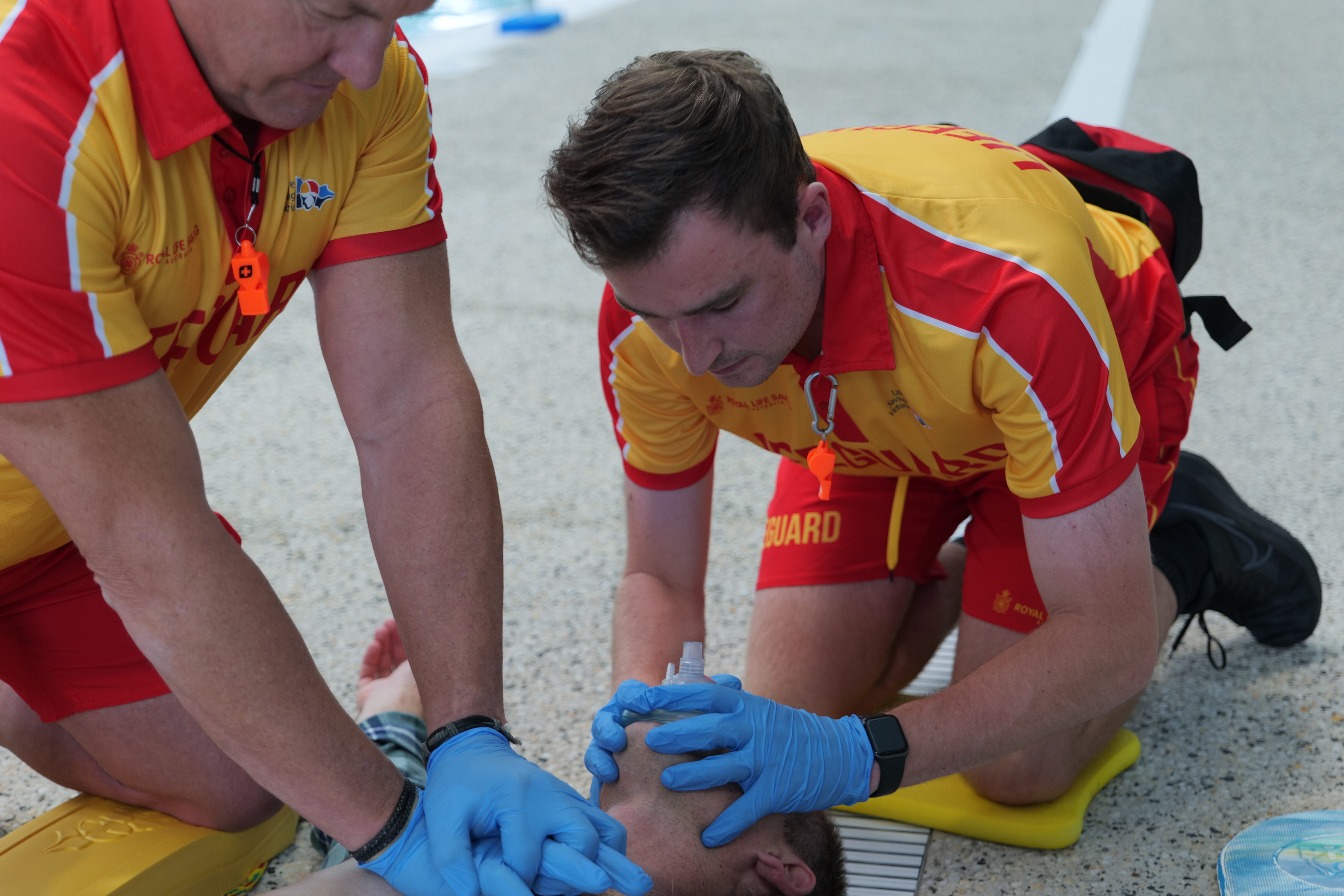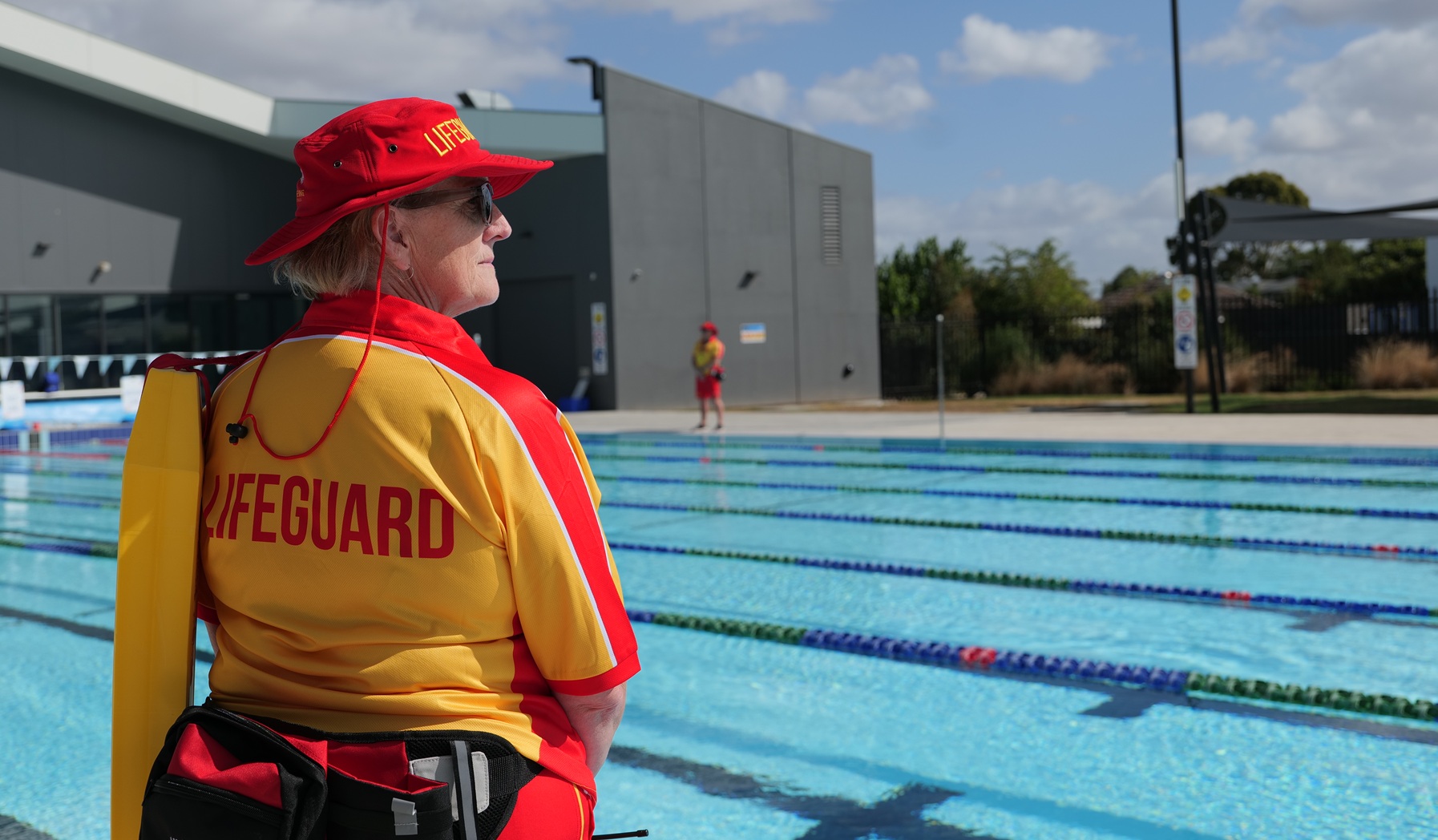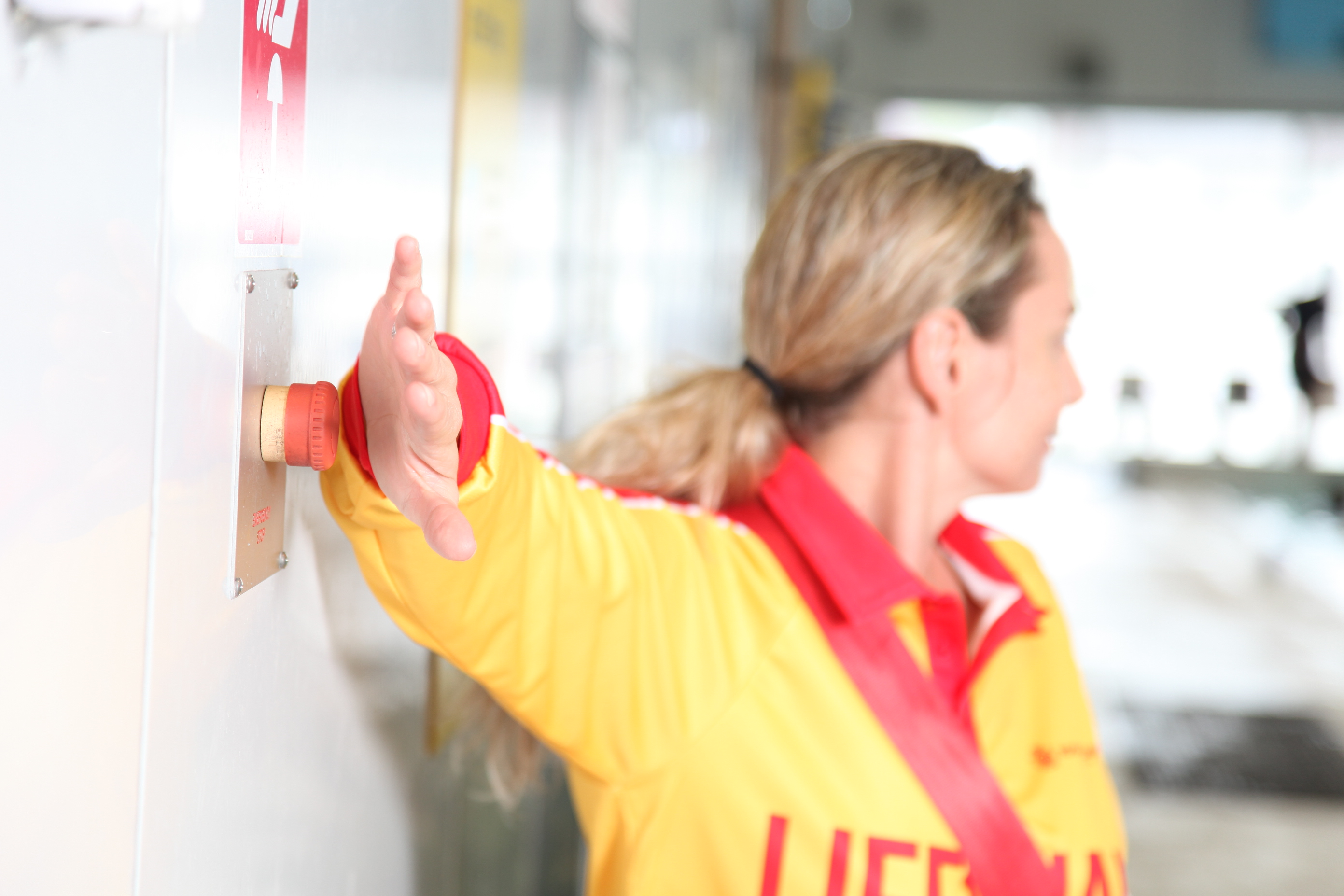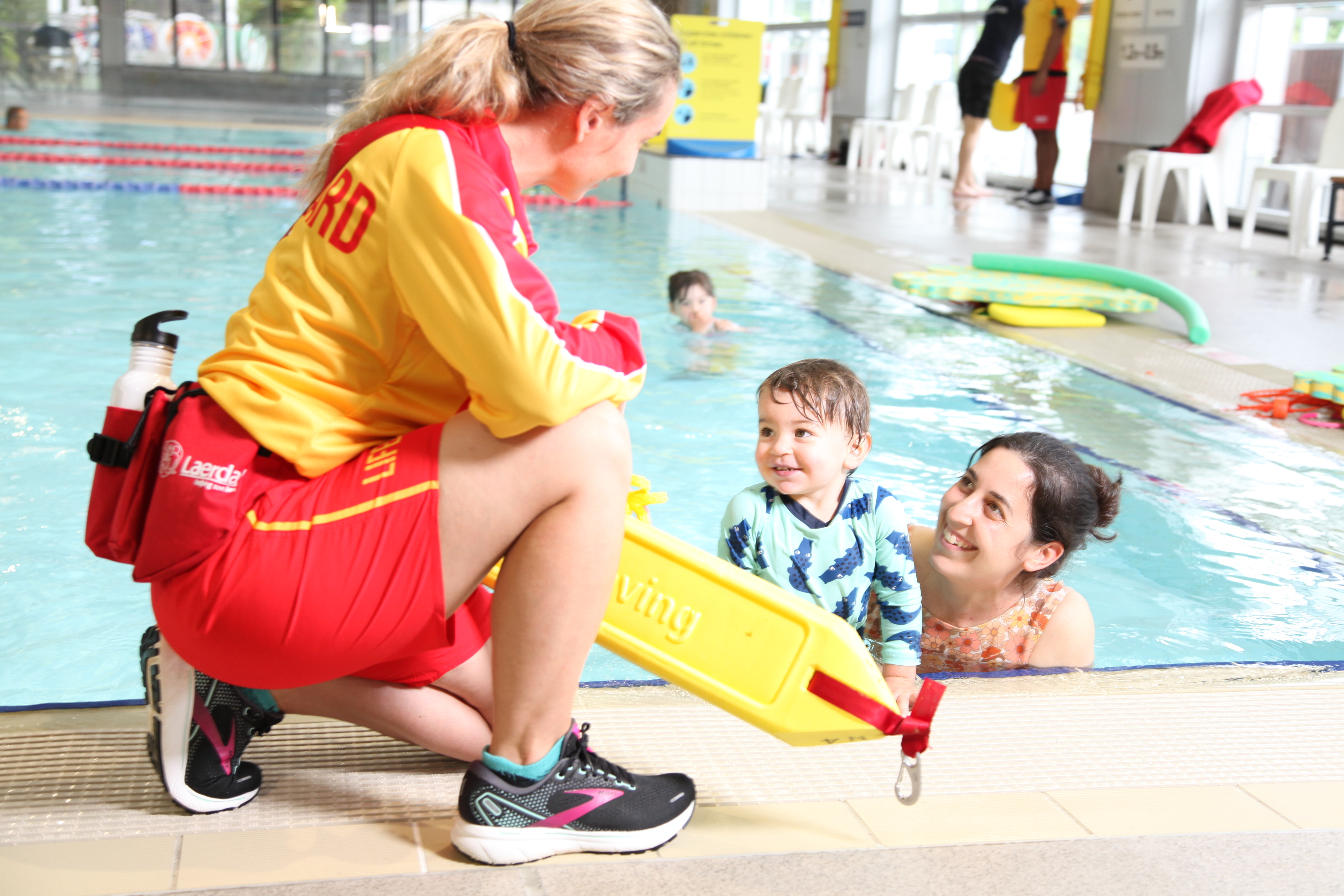19 June 2025
Lifeguards at Public Pools: An Essential Layer of Protection
Every person deserves access to safe aquatic facilities – and in almost all circumstances that should include qualified pool lifeguards.
By RJ Houston, General Manager – Capability & Industry, Royal Life Saving Australia
Each year, an average of four people fatally drown in public swimming pools in Australia. In 2023, lifeguards performed more than 7,800 rescues and responded to over 14,000 major incidents at aquatic facilities.1,2 These incidents range from medical emergencies to non-fatal drownings, many of which could have become fatalities without timely intervention.
Despite this, some councils are exploring lifeguard-free operating hours, citing financial and workforce challenges. Royal Life Saving Australia believes such models present significant risks to public safety and should only be considered as a last resort, after a thorough risk management process has been conducted and with robust safeguards in place.
Understanding the Risk
While public pools are among the safest aquatic environments, this safety is largely due to the presence of trained lifeguards. Without them, the risks increase significantly. Research shows that serious medical episodes outside of the water are common and that most drowning at public pools occurs when supervision lapses – whether due to distracted carers or the absence of qualified staff. Of particular concern is the safety of children, less confident swimmers, and those with pre-existing medical conditions or special needs, who often rely on others for their safety.
Every second matters. Drowning can be silent – with brain damage as a consequence of insufficient oxygen beginning within minutes of submersion. Immediate specialist response is critical, and trained lifeguards can identify subtle signs of distress, perform rescues within 30 seconds, and deliver oxygen-supplemented resuscitation on-site. Delays in providing CPR with immediate rescue breaths, supplemented oxygen and defibrillation – even of just 2–3 minutes – significantly reduce survival and recovery outcomes.
Bystander Rescue Is No Substitute
Expecting patrons to rescue each other is not a reliable or fair substitute for trained professionals. Royal Life Saving Australia research5 has shown that over a 20-year period 119 rescuers have drowned while attempting to rescue someone else who was in difficulty in the water - the vast majority of these have been bystanders without lifesaving qualifications. Additionally, there have been recent widely reported rescuer drownings at hotel pools.6, 7
These cases highlight the ethical and operational risks of relying on community members to fill the lifeguard role without sufficient training and equipment.
The Role of Lifeguards
Beyond rescue, lifeguards:
- Educate patrons (and build community connections)
- Enforce preventative safety rules (e.g., no diving, no running)
- Scan the pool and spas – on top, below the surface and on the bottom of the water
- Supervise vulnerable swimmers (particularly children)
- Monitor water quality and respond to contamination
- Manage first aid and medical incidents
- Maintain emergency readiness
Lifeguards also support water safety education programs like Keep Watch and Watch Around Water, reinforcing supervision standards among carers and patrons.
Pool Operators Must Consider More Than Cost
Pool owners and operators – especially local governments – must consider:
- Actual risks to patrons, including the consequences of delayed or failed rescues
- Work health and safety responsibilities under national laws
- Moral and ethical duties to prevent avoidable deaths and injuries
- Social licence to operate trusted community facilities
- Potential legal implications, including not just civil claims, but WHS prosecutions
These factors collectively demand a high standard of safety in aquatic operations.
Definition of Supervision at Aquatic Facilities
Royal Life Saving Australia have maintained and developed the Guidelines for Safe Pool Operation (the GSPO) since 1992. The GSPO is a set of detailed specifications and recommendations establishing best practice design and operations of aquatic locations nationwide.
The GSPO Aquatic Supervision section outlines the recommended guidelines for providing safe operations at aquatic facilities. The definition for appropriate supervision at an aquatic facility is as follows (GSPO SV2.3.2):
At a minimum, Supervision in an Aquatic Facility is a minimum of 1 person over the age of 18 (Lifeguards may be younger however must be supervised by a person over 18) who:
- Is directed by a set of arrangements within a Supervision Plan and;
- holds a current skill set equivalent to that of a Pool Lifeguard
- is in a position to maintain effective supervision of all persons on, below the surface and the bottom of a swimming pool (or their zone)
- can respond to and reach a persons in distress in the swimming pool within 30 seconds and
- Who has timely access to:
- A Rescue Tube
- A Spinal Board
- A First Aid Kit
- An Oxygen Resuscitator
- A Defibrillator
This section outlines that it is not just the mere presence of a lifeguard that ensures supervision is adequate, it includes their age, their positioning, their proximity to users, and their access to specialist rescue and life-support equipment and their level of training and competency to prevent and respond to emergencies.
A Word on Community-Led Supervision Trials
Some regional councils have piloted “inducted access” models where community members are granted access to use the pool during unstaffed hours. While these models are justified as cost-saving measures, they likely introduce significant risk. This is particularly relevant when it comes to the safety of children and other persons with layered or complex vulnerabilities who may not understand the risk or ways to stay safe.
Where inducted community members or ‘buddies’ do not hold competency in preventing accidents and emergencies, following established emergency and rescue procedures and delivering oxygen-supplemented resuscitation, there is a real danger to patrons, both as potential casualties and potential untrained rescuers.
There are likely to be psychosocial impacts and community pressure placed on individuals involved in a situation where a drowning occurs. Are the community who happily use these pools aware of this impact?
Where such models are explored, they must be supported by:
- Ensuring clear understanding of aquatic dangers and ways to stay safe
- Screening for those with pre-existing medical conditions and/or special needs
- Demonstrable competency in supervision, rescue, resuscitation and general first aid
- Clear understanding of emergency procedures
- Clear buddy systems and adult-only access
- Emergency equipment and protocols
- Remote monitoring and rapid escalation plans
- Ongoing safety reviews and risk assessments
- Considering the availability of lifeguard assistance technologies and what is needed to support their effective implementation
Lifeguards Save Lives
Lifeguards are not a luxury – they are a proven and essential investment in public safety. Their presence is strongly linked to accident prevention, lower rates of drowning, expert emergency response and after care, and safer aquatic environments for all. Removing them increases the risk to life, especially among children and less capable swimmers.
Every public pool should have trained and capable lifeguards present whenever it is open.
Investing in lifeguards is an investment in safety, equity, and trust. When families visit the pool, they should feel safe knowing a trained professional is watching and ready to respond. Let’s keep it that way.
References
- Houston, R., Moran, M., Miller, L., & Crockford, M. (2023). Safe places to swim: The state of safety at Australian aquatic facilities. Royal Life Saving Australia.
- Houston, R., Koon, W., & Scarr, J. (2025). State of Australian aquatic facilities 2025. Royal Life Saving Australia.
- Royal Life Saving Australia. (2021). Guidelines for Safe Pool Operations.
- Australian Water Safety Council. (2021). Australian Water Safety Strategy 2030.
- Miller, L. (2023). Analysis of unintentional drowning in Australia 2002-2022: progress, challenges, and data to inform prevention. Royal Life Saving Society - Australia. Sydney, Australia
- Cannon, A. (2024, April 1). Two men drown in Gold Coast pool. Brisbane Times. Retrieved from https://www.brisbanetimes.com.au/national/queensland/two-men-drown-in-gold-coast-pool-20240401-p5fggf.html
- Rigby, M. (2024, April 1). Sikh community supporting family who lost Dharmvir and Gurjinder Singh in Gold Coast pool drowning. ABC News. Retrieved from https://www.abc.net.au/news/2024-04-01/gold-coast-drowning-hotel-rescue-sikh-community-support/103656830
.




